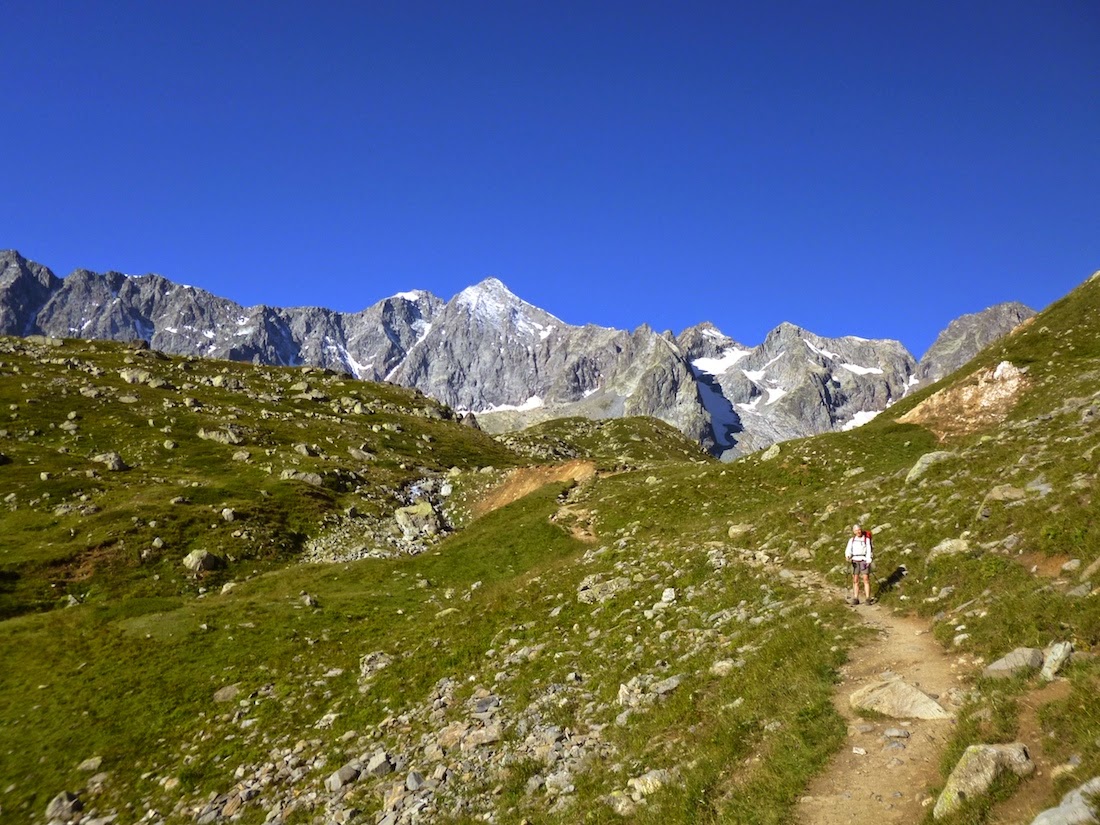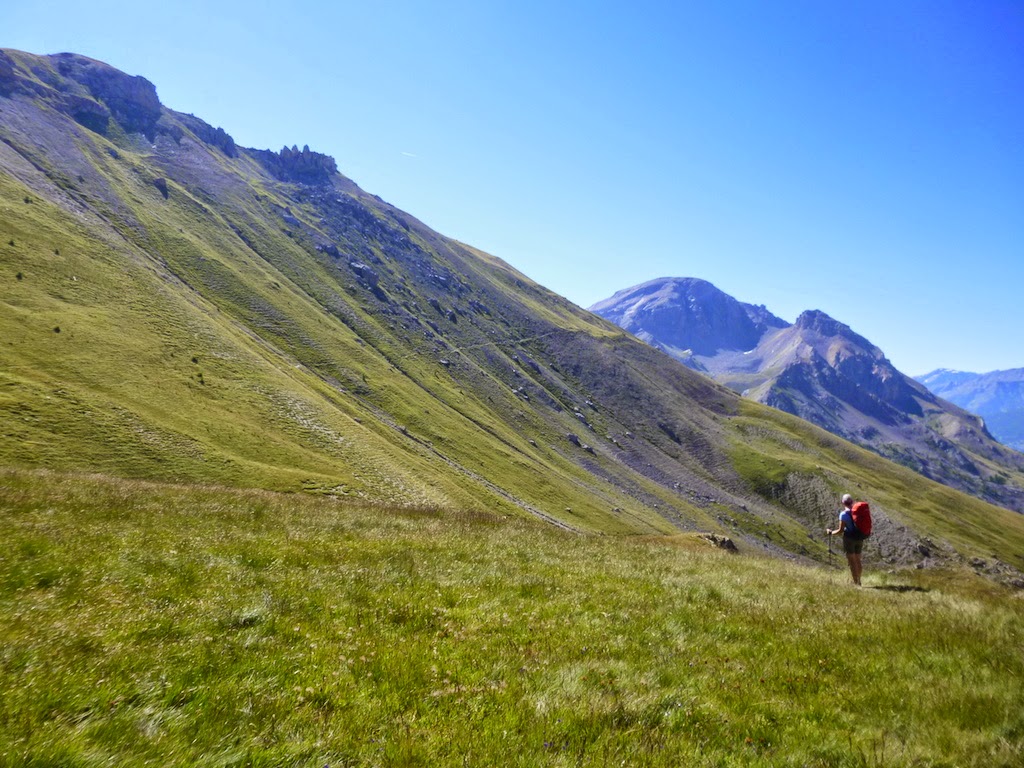Another rewarding day in the Haut Alpes
You never quite know what you're going to get when you order a climbing guidebook over the internet. It could be an absolute gem, a total load of rubbish or, most likely, something in between.
When we were planning this year's trip to France (primarily another of Di's pilgrimages to pay homage to the concept of the
Grand Randonnée), I put my foot down and said that if we were going to Europe again I wanted to do some climbing. Of course that put the ball in my court as to where we would climb and how we'd find what we wanted to do. Loving climbing guidebooks as I do, I ordered a bunch of them - all for the Alps. We were tempted by the iconic area around Chamonix but for various reasons decided that climbing in the southern Alps around Briançon would be the best option for this trip, especially after I found a book called
Escalade en Briançonnais, Haut Val Durance and Queras. It covers 11 distinct areas, with cliffs comprised of 6 different types of rock: limestone, conglomerate, gabbro, quartzite, granite and gneiss - a real smorgasbord for the rock-climbing gourmand and towards the better end of the scale when it comes to climbing guidebooks.
Yesterday we went to an area called Ponteil. The guidebook describes the climbing thusly: "
The rock is amazing: pocketed slabs, cracks and dihedrals on a yellow rock that offers good grip ... On top the view of the Durance valley and on West Queyras amazing". It sounded like a place we had to visit.
For our first outing in the area I decided on a cliff named Nid d'aigle, meaning Eagle's Nest or Eyrie. The crag takes its name from the first route done on it, which the guide says is "
La grande classique du Ponteil, la première voie ouverte dans la falaise". Here's the view you get when you are on your way up to the climbing on this sector (
right click on photo for a more detailed view):
 |
| Nid d'Aigle: our climb takes the prominent dihedral towards the right-hand end |
With its beetling overhangs, it was a bit intimidating-looking compared to the slabs we'd been on at Ailefroide on our previous day out but the route we had chosen was well within our level of capability so up we went. As Di wanted me to lead the crux fourth pitch, she racked up and set off on the first pitch, which started with a nice easy angle ...
... and here she is on the belay at the end of the pitch, which traverses around the first big overhang in the dihedral ...
 |
| Pitch one finishes with an airy traverse |
After the first pitch the climb gradually steepens. Here Di is stemming up the upper section of the third pitch ...
 |
| Di on pitch 3 |
I took a couple of scenic shots at this point of the climb ...
 |
| Looking down to the houses, road and Durance River below |
 |
| Looking across the valley |
After I pulled through the crux on pitch four I took this photo looking back down at Di on belay ...
 |
| Looking down pitch four |
We were delighted that, apart from a few loose stones laying about on ledges, the rock was pretty much as the guide described: nice and solid. Although the route consisted of five pitches, with traverses and a couple of ledges and an overhang they were all relatively short: two free-hanging 50 metre rappels gets you back to the bottom. Here's Di halfway down the first rappel ...
 |
| Di on the first rappel |
On the way back to the car we stopped for a look back at our route and to check the progress of a party of three who were on pitch two when we rappelled past them. If you expand this next photo you'll get a clearer view of them, with the leader at the top of the third pitch, belaying up the other two in the party ...
 |
| Climbers on pitch 3 of Nid d'aigle |
We thought it would be good to see a bit more of the countryside so we took a route back to our apartment via
Saint-Crépin, a little village below the crag on the other side of the Durance River. On the way, we passed an airfield that we'd noticed from high on the hill, where a bunch of gliders were laying in wait for a late afternoon flight ...
 |
| Gliders near Saint-Crépin |
We'd overlooked bringing any lunch with us, so when we passed an enticing-looking roadside bar-café we decided to check it out ...
 |
| Alfresco dining in the Haut Alpes |
It was only once we were seated that we noticed the sign above the entrance ...
 |
| The charmingly-named "Le Gaulois" |
As soon as we sat down and saw the plate of food delivered to the lady sitting next to me, we knew we were in for a good feed. The lady's companion, noticing our appreciative looks said, "Everything here is good!" The menu made choosing very difficult, but I decided to go with my first impulse and have the same salad the afore-mentioned lady was devouring with such gusto. Di opted for the seafood-based equivalent. We managed to restrain ourselves to just the one course - but only bearing in mind that we'd have plenty of opportunity to visit again before we leave the area.
Di's tongue-in-cheek comment as we were polishing off our lunch was, "
Well .... it isn't Arapiles, but ...". For those of you who are non-climbers, or those of you who are but haven't climbed at Arapiles, it's one of the most user-friendly
traditional climbing areas in the world, with the emphasis on
traditional. Situated far away from Les Haut Alpes in even farther western Victoria, the climbing is fantastic: wonderful, solid rock encompassing a huge range of grades. But there is little in-situ gear: apart from the occasional bolt or old piton to save one from a catastrophic ground fall, you pretty much have to place all your own protection. It's just the opposite hereabouts. But then it's pretty hard to find a charming little bar-café like "Le Gaulois" when you've finished climbing for the day!


















































































